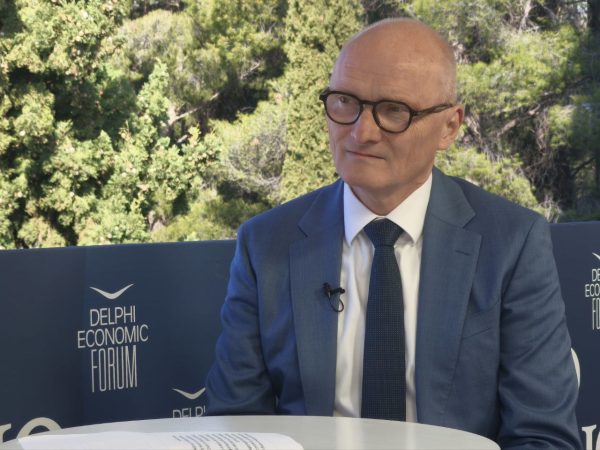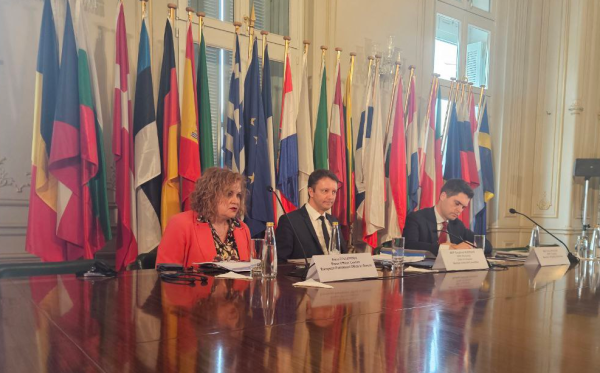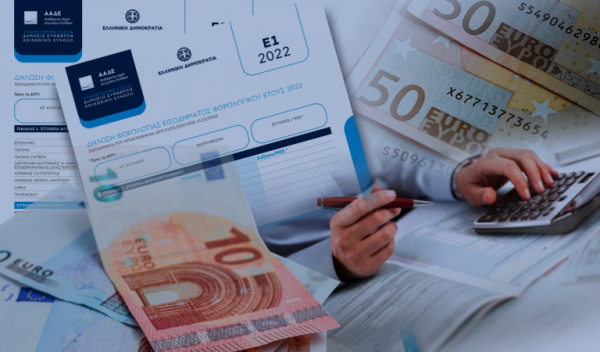
Greece’s 10-year borrowing costs currently exceeded 5% (5.003%) , from 2.9% just at the beginning of August, marking a 72.5% increase in the same period, while multi-year highs were also recorded in the Eurozone, with German bond yields in positive territory for the first time since June 2015 on expectations of another rate hike and concerns about more debt issuance to finance increased government spending.
European Central Bank officials do not appear willing to fetter the bond market. Meanwhile, the yield on 10-year British debt rose 4.5 basis points after jumping 119 basis points in just four sessions. This is the sharpest move since at least 1979, in response to new finance minister Kwasi Kwarteng’s borrowing plans.
The yield on Germany’s benchmark bond fell 1 basis point to 2.24%, after a near 11-year high of 2.31%. The yield on the 10-year Italian bond rose by 1 bp. to 4.43%, after reaching a new 9+ year high of 4.85%, with the spread between Italian and German at 252 bp. Investors focused on Italy’s budget after the victory of Giorgia Meloni’s right wing coalition in Sunday’s election, which inherits one of the eurozone’s biggest debts amid a period of rising interest rates and slowing growth. Mario Draghi’s outgoing government will announce the country’s new growth and fiscal estimates this week. News that the Nord Stream natural gas pipeline from Russia to Europe has been damaged sparked a rise in natural gas prices, which analysts see as an indicator of future inflation.
How and under what conditions will the Greek government re-enter markets
Despite the increase in borrowing costs and despite the “cash cushion” of 38.7 billion euros today, the Public Debt Management Agency (P.D.M.A.) is expected, once the volatility is restrained, to continue its issuing activity with the possible re-issuance of a 10-year bond, in the context of its stable presence in the markets.
Since the beginning of the year, the Greek State has drawn 7 billion euros, while what should be understood is that the moves made by the PDMA could take place with a controlled risk due to the risk hedging movements that have been made in previous years, as the bilateral loans of the 1st memorandum of 53 billion euros have been hedged through swaps, with the result that for every 1% increase in borrowing costs, Greece would reap (if subscribed) a profit of 4.5 billion euros.
Thus, if e.g. in the next exit to the markets the country borrows through the reissuance e.g. 10-year bond due to the relatively expensive situation, a very small part of the above swaps could be closed at the same time, with the result that the final cost of borrowing for the State would be much lower.
PDMA raised 812.5 million euros from 6 month bonds
It should be noted that PDMA raised 812.5 million euros from the issuance of six-month interest-bearing Treasury bills on Wednesday at a significantly increased cost, according to its announcement. The yield stood at 1.95%, up 90 basis points from a 1.05% yield in the previous August issue. The raised amount includes non-competitive offers of €187.5 million. The coverage ratio stood at 2.27 from 1.76 in the previous auction. Settlement date is September 30th.
Latest News

German Ambassador to Greece Talks Ukraine, Rise of Far Right & Tariffs at Delphi Economic Forum X
Commenting on the political developments in his country, the German Ambassador stressed that it was clear the rapid formation of a new government was imperative, as the expectations across Europe showed.

Athens to Return Confiscated License Plates Ahead of Easter Holiday
Cases involving court orders will also be excluded from this measure.

Servicers: How More Properties Could Enter the Greek Market
Buying or renting a home is out of reach for many in Greece. Servicers propose faster processes and incentives to boost property supply and ease the housing crisis.

Greek Easter 2025: Price Hikes on Lamb, Eggs & Sweets
According to the Greek Consumers’ Institute, hosting an Easter dinner for eight now costs approximately €361.95 — an increase of €11 compared to 2024.

FM Gerapetritis Calls for Unified EU Response to Global Crises at EU Council
"Europe is navigating through unprecedented crises — wars, humanitarian disasters, climate emergencies," he stated.

Holy Week Store Hours in Greece
Retail stores across Greece are now operating on extended holiday hours for Holy Week, following their Sunday opening on April 13. The move aims to accommodate consumers ahead of Easter, but merchants remain cautious amid sluggish market activity.

Green Getaway Ideas for Easter 2025 in Greece
Celebrate Easter 2025 in Greece the sustainable way with eco-farms, car-free islands, and family-friendly getaways rooted in nature and tradition.

Civil Protection Minister Details Summer Firefighting Plans at Delphi Forum
At the 10th Delphi Economic Forum, Minister of Climate Crisis and Civil Protection Yiannis Kefalogiannis discussed Greece's plans for the upcoming fire season.

How Shops and Markets Will Operate During Easter Holy Week
The Easter holiday schedule has been in effect since April 10, with retail stores open Palm Sunday, and most supermarkets also operating to meet consumer demand for Easter shopping

Why Is the French Aircraft Carrier Charles De Gaulle in Piraeus?
Docking in Piraeus after a four-month deployment in the Indo-Pacific region, the admiral of the aircraft carrier the Charles de Gaulle says, "Greece is our best partner in the Mediterranean."








































 Αριθμός Πιστοποίησης
Αριθμός Πιστοποίησης